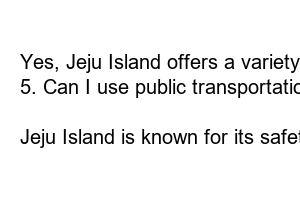제주도 관광지도
When visiting Jeju Island, having a reliable tourist map is essential to make the most of your trip. Jeju Island is a paradise for nature lovers, with its stunning beaches, lush forests, and volcanic landscapes. It can be overwhelming to navigate the island without a map, especially for first-time visitors. In this blog post, we will explore the benefits of using a Jeju Island tourist map and provide some helpful tips for making the most of your visit.
**Benefits of Using a Jeju Island Tourist Map**
Navigating Jeju Island can be challenging due to its vast size and numerous attractions. A tourist map can help you easily locate the top sights, such as Hallasan Mountain, Seongsan Ilchulbong Peak, and Jeju Loveland. With a map in hand, you can plan your itinerary efficiently and avoid getting lost on your way to must-see destinations.
**Tips for Using a Jeju Island Tourist Map**
When using a tourist map, be sure to mark your hotel or accommodation on the map to ensure you can easily find your way back. Additionally, consider downloading a digital map on your phone for quick access while on the go. Take note of major landmarks or bus stops to help orient yourself as you explore the island.
**Must-See Attractions on Jeju Island**
From the stunning beaches of Jungmun and Hyeopjae to the picturesque waterfalls of Cheonjeyeon and Jeongbang, Jeju Island boasts a wide range of natural wonders waiting to be explored. Be sure to visit the Osulloc Tea Museum, Seongeup Folk Village, and the quirky Trick Art Museum for a well-rounded experience of the island’s culture and attractions.
**Exploring Jeju Island’s Unique Cuisine**
No visit to Jeju Island is complete without sampling the local cuisine, such as Jeju black pork, abalone porridge, and haenyeo specialities. Use your tourist map to locate recommended restaurants and markets where you can indulge in traditional dishes and snacks unique to the island.
**Embracing Jeju Island’s Natural Beauty**
Whether you’re hiking through the lava tubes of Manjanggul Cave, exploring the vibrant fields of canola flowers at Seopjikoji, or relaxing on the sandy shores of Hamdeok Beach, Jeju Island’s natural beauty will leave you in awe. Let your tourist map guide you to these breathtaking locations for an unforgettable experience on the island.
**Navigating Jeju Island’s Transportation System**
While renting a car is a convenient way to explore Jeju Island, the public bus system also offers a cost-effective and efficient mode of transportation. Refer to your tourist map for bus routes and schedules to help you get around the island with ease.
**Summary**
In conclusion, a tourist map is an invaluable tool for navigating Jeju Island and making the most of your visit. By following the tips provided in this blog post, you can ensure a smooth and memorable experience exploring the island’s natural beauty, cultural attractions, and culinary delights.
**FAQs**
1. Can I rent a car on Jeju Island?
Yes, car rental services are available on the island for those who prefer to drive themselves.
2. Are there English-speaking tour guides on Jeju Island?
Yes, there are tour guides who speak English and other languages to assist visitors.
3. What is the best time of year to visit Jeju Island?
Spring and autumn are considered the best seasons to visit Jeju Island due to the mild weather and blooming flowers.
4. Are there hiking trails on Jeju Island?
Yes, Jeju Island offers a variety of hiking trails for all levels of hikers, including the popular Hallasan Mountain trail.
5. Can I use public transportation to get around Jeju Island?
Yes, the island’s public bus system is a convenient and affordable way to explore Jeju Island’s attractions.
6. Is it safe to travel to Jeju Island alone?
Jeju Island is known for its safety and friendly locals, making it a great destination for solo travelers.

